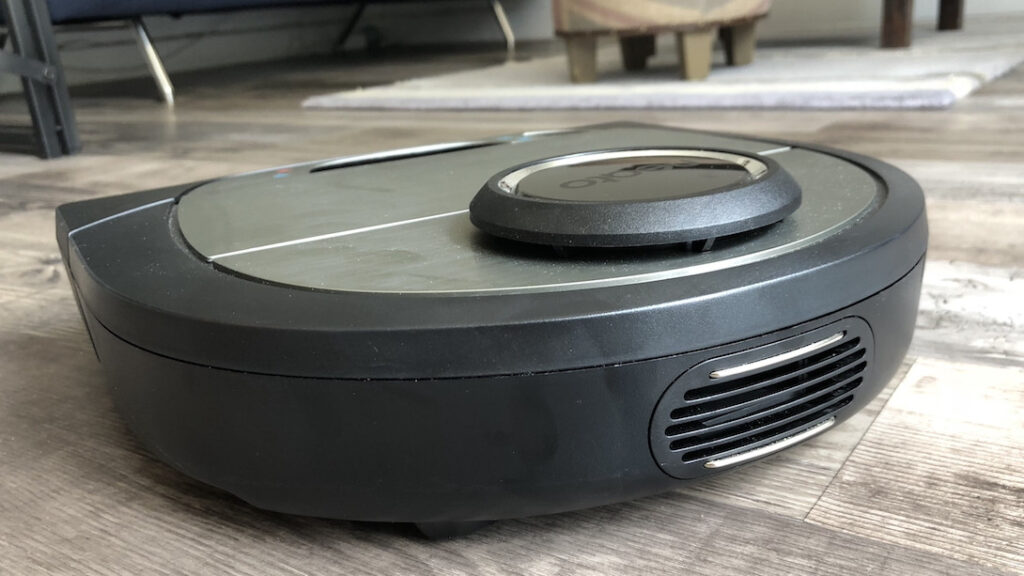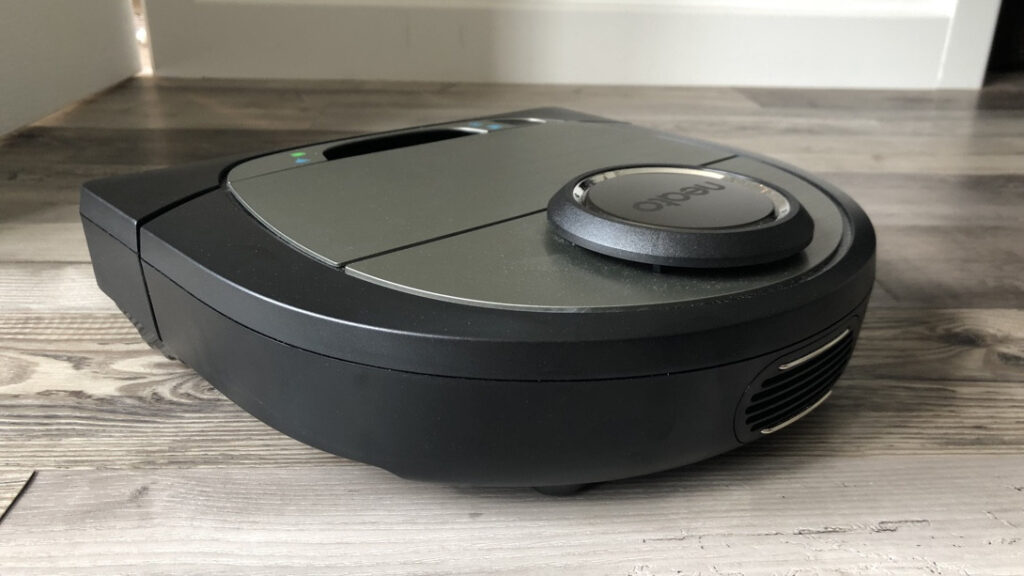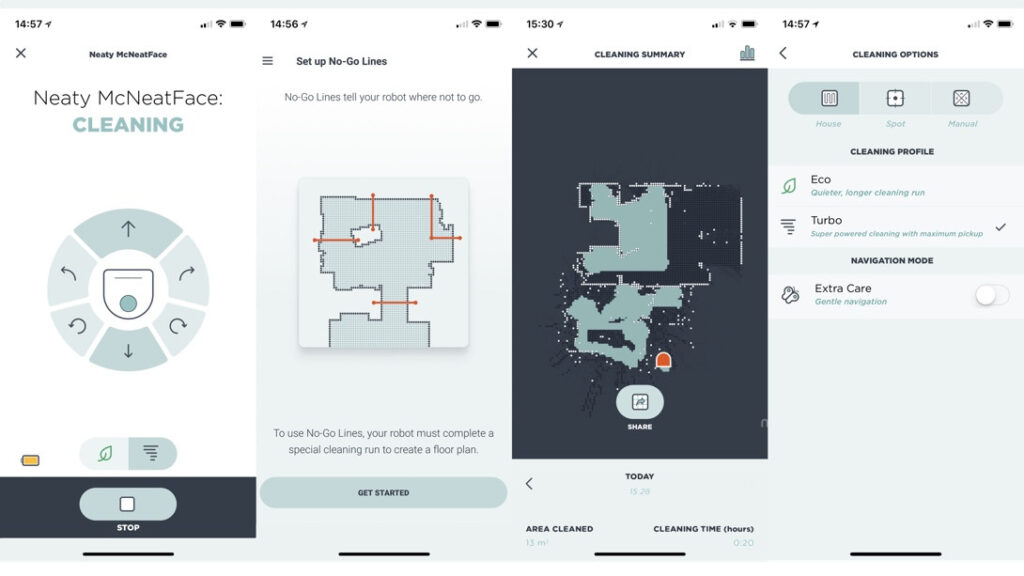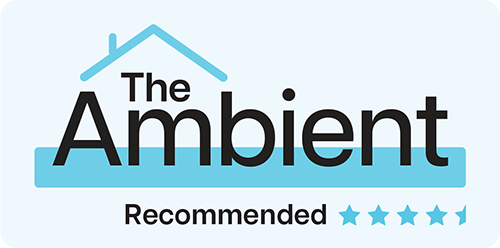Multi-floor mapping and more – Neato's latest flagship put to the test
The D7 Connected takes everything we loved about the original Connected and adds in the unique – and quite frankly awesome – My Floor Plan mode, which is a feature many people have been crying out for on robot vacuum cleaners for years… no more fencing off troublesome areas with magnetic strips and the like. Sure, you'll need to fork out more cash for extra base stations if you want to make the most of multi-floor mapping but hey – small (extra) price to pay for a clean house eh? The cleaning performance is great, the app is easy to use and the battery life is superb too. Best robot vacuum cleaner available right now? Quite possibly.
Pros
- Multi-floor maps with No-Go lines
- D-shape design great for corners
- Long battery life
Cons
- Extra base stations needed
- Beeps can be confusing
- Digital assistant bugs
If you’ve been doing your research into buying a top robot vacuum cleaner, then you have no doubt come across Neato’s range. The flagship of which, the Botvac D7 Connected, is the model that’s on test here – a £799 machine that goes up against the likes of the Dyson 360 Eye and the iRobot Roomba 980 in the upper echelons of the robo-cleaner world.
How does it fare against those heavy-hitting, and highly-rated, rivals? Read on to find out – we’ve spent a few weeks living with the Neato Botvac D7 and we’re all set to deliver our comprehensive verdict.
Neato Botvac D7 Connected: Design and build
Take a look at the full Neato range and you’ll notice a familiar pattern – the company doesn’t stray too far from the D-shape design that the Botvac D7 sports. In fact, it doesn’t ever stray an inch from the design.
And that’s because Neato is convinced that it’s the perfect shape for a spotless clean, getting within 14mm of walls and corners, we’re told (compared to an alleged 98mm from circular robot vacuums).
New kid on the block: Roborock S4 Max review
The D7’s shape allows for a front-brush design with a 27cm brush up front. This main brush teams up with a smaller, spinning edge, brush that rotates at 90 degrees to the main brush, helping to kick up dust and grime that might be hiding in cracks and crevices.

In terms of aesthetics, the chrome and black plastic low-profile design looks plenty ‘cool’ enough to take a place in your stylish smart home, with the 10cm high profile only increased in one part by the little circular turret that sits on top. That’s the bit that packs in all of the smart tech it uses to navigate – but more on that in a bit.
On the top is a number of LED lights, indicating things like battery life, Wi-Fi status and so on. To be honest, I’ve never really figured out the colour codes, or what the various beeps the D7 emits actually mean. I’m sure the manual will tell you more – if you’re the type of person that reads manuals. I’m not judging you.
Neato Botvac D7 Connected: Performance and features
Like previous Botvac connected models, the D7 uses the company’s LaserSmart tech to find its way around your abode. Essentially, lasers in the turret up top (the brilliantly named Botvision laser scanner) divide the room up into 15 x 15-inch segments and tackle the room based on what the D7 determines to be the most efficient path.
Rival: 360 S7 Pro review
The Botvac D7 doesn’t have too many quibbles navigating around and under furniture, although I did sometimes find that it misjudged its height a little bit, with the turret leading to a wedging under a cabinet on a few occasions.

There are eco (not so loud) and turbo (quite loud) modes, with a whopping 2 hour battery life on the former. However, unless you’ve got a humongous house to clean, I’d suggest sticking to turbo. You get around 45-50 minutes on from this and you are left with a much better finish. Cleans can be started manually from the D7 itself, or from within the app.
There is also a manual mode, where you use the app to control directions of the robot cleaner – like a less-fun RC car. Whatever mode you choose, you’ll get a great clean, with corners handled by that spinning brush and D-shaped head; and the brush and blade roller is also great at dealing with long hairs. I’ve mainly used my test model on a hard floor, but it has also done a dandy job on my rugs too, with minimal tussle-tangles.
However, it’s the MyFloorPlan mode that really sets the D7 apart from its rivals. On its first run out (you can also initiate a re-do of the ‘Discovery’ run from the app) the Botvac will learn the layout of the land – where the walls are, where furniture is, if there are stairs and so on. You’re then presented a plan of the layout from within the app. There’s nothing new there – the Xiaomi app offers a similar feature for its robo cleaners.
Chinese rival: Ecovacs Deebot T8 review
But it’s the No-Go Lines that make the D7 a winner. You can draw virtual lines around any areas within a learned layout – think troublesome chair legs, areas where wires are on the floor, pet bowls… you get the idea. Rather than putting down those magnetic strips, or beacons, that other robot vacuums use, you can create little (and lots of) areas in your house you never want the D7 to venture into. For people that have been put off getting a robot cleaner because they are wary of parts of their rooms that are bound to cause it trouble, this feature is perfect.
A recent software update actually means that the D7 can learn the layout of multiple floors (maximum of three). However, to start cleaning using a floor plan with No-Go Lines, the cleaning must be initiated via the Neato app, and the robot must start from a charge base… so you’re going to need to fork out extra to really make the most of the multi-floor functionality.
Neato Botvac D7 Connected: The app and digital assistants

The Neato app puts simplicity front and centre, with a cartoony theme that’s definitely designed with regular folk, rather than tech-heads, in mind. Part of the ‘fun’ with the app is giving your D7 a name. That way, when you get updates from it, it gets a bit of personality. “Neaty McNeatFace has finished cleaning” and the like.
From the app you can set schedules (this is more complex than it needs to be really, but not so much so that I’d class it as difficult), manually control the D7, adjust No-Go Lines, view clean history and also adjust the robot’s settings – eco, turbo, extra-care mode and so on.
There’s also a spot cleaning mode that can be initiated within the app: a 6.5 x 6.5ft clean (or a 13 x 13ft one, if you change the settings) where it works from the boundary inwards; so is perfect for a small, square room.
The app also lets you sync up with Alexa, Google Assistant and IFTTT, although a big bugbear is that cleans initiated from a voice assistant ignore the No-Go Lines that have been set, which seems a bit dumb. You have to always start the D7 from within the app for your custom floor plans to be functional.
Neato Botvac D7 Connected: Battery life

As mentioned, you’ll get up to two hours of continuous cleaning from the eco mode and just under half that time with the turbo mode switched on. However, a boost charge mode actually means you don’t need to worry too much about whether that’s enough time for a full clean of your space.
The D7’s new Quick Boost Charging feature (that arrived with that software update I mentioned) analyses how much juice it needs to complete its clean, returning to the charging station and charging just enough to finish the job.
With the Dyson 360 Eye I’ve got used to just washing the filter every month or so but the Botvac uses disposable filters, so you’ll have to buy extras to guarantee you’re getting the best performance. The dust bin isn’t the biggest, and it’s usually full after a couple of completed cleans. That’s no biggie though as it’s easy to empty it out – but it is annoying that there’s no indicator, on the machine itself or from within the app, to tell you it’s full.






